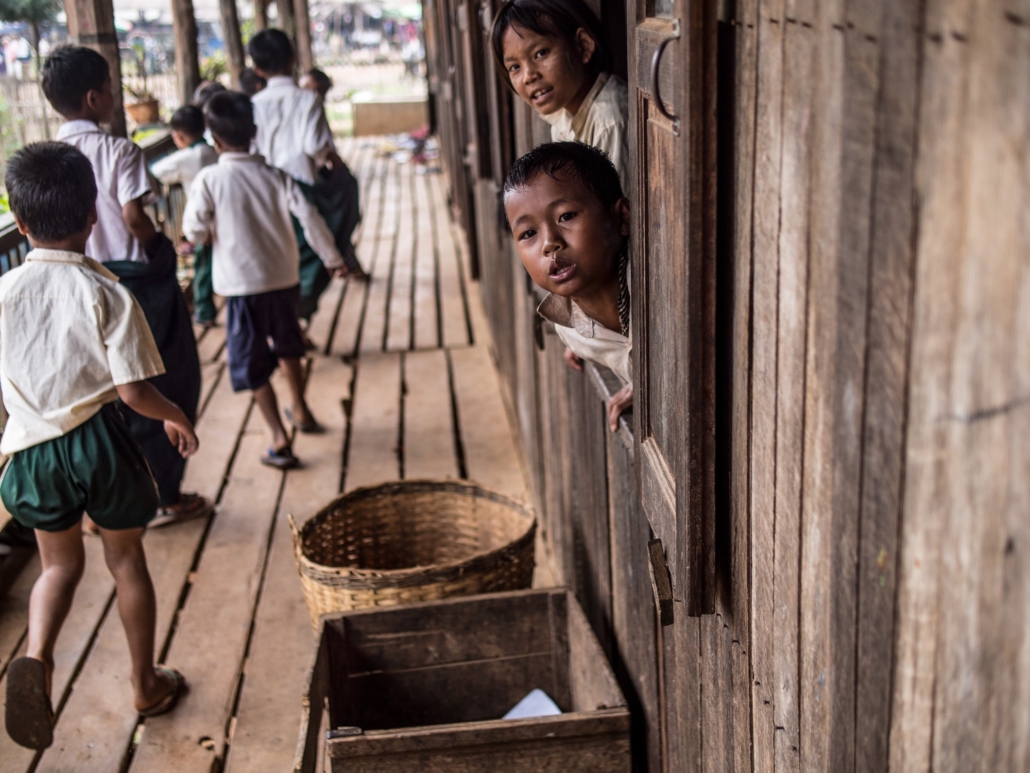10 Facts about Child Labor in Myanmar

Myanmar was a prosperous country at the beginning of the 1960s. However, when Myanmar came under the rule of an oppressive military junta from 1962 to 2011, it became one of the world’s poorest nations. Many considered the former military regime in Myanmar to be one of the most oppressive and abusive regimes in the world, committing serious human rights and humanitarian law violations against civilians, including women and children. Child labor is one of the prevalent issues that the government is trying to tackle, but it remains common in Myanmar.
The International Labour Organization (ILO) defines child labor as work that negatively affects children’s mentality, physicality or morality and interferes with their schooling. The worst forms of child labor include slavery, sexual exploitation, illicit activities or work that by nature is likely to harm the health, morals or safety of children.
Despite the new government body’s attempt to eradicate child labor, it remains a huge challenge in Myanmar due to its limited resources. Here are 10 facts about child labor in Myanmar.
10 Facts About Child Labor in Myanmar
- Child Labor: A 2015 survey estimated that 1.13 million children ages 5 to 17 in Myanmar, or 9.3 percent of the child population, were in child labor. The number in Myanmar is higher than the Asian average, which estimates determine to be 7.4 percent. Among these Myanmar child laborers, over half engaged in hazardous work that may cause harm to their physical, mental or moral development.
- Minimum Working Ages: Myanmar law defines the minimum age for work as 14 for certain sectors, but there is no minimum age for work for all sectors. The Myanmar Labor Force Survey 2015 estimates that 60.5 percent of child laborers work in the agricultural sector, which does not have a minimum age for work. The other sector that the majority of child labor occurs is in the manufacturing sector.
- School: Myanmar law made school free and obligatory for children only up to age 10. This leaves the children ages 10 to 13 the most vulnerable to child labor since they have neither legal permission to work nor the requirement to go to school.
- Army Recruitment: The Myanmar government has made some efforts to eradicate the worst forms of child labor. However, the government officials are complicit in the use of child labor through forced recruitment of children into its national armed force in conflict areas. Despite 18 being the legal minimum age for enrollment in the army, people often coerce children as young as 14 to work in the army as combatants, messengers or domestic workers.
- The Economy: The transition from a military-ruled nation to a democratic regime in 2011 has helped the economy expand quickly. When people have more disposable income, the demand for services rises and pushes the demand for more labor. On the other hand, this economic boom partly fueled the crisis of child labor as companies and industries increased in the exploitation of cheap child labor to reduce cost. For example, food establishments only have to pay child workers $0.3 an hour compared to $0.43 for an adult.
- My-PEC: In response to child labor in Myanmar, the U.S. Department of Labor funded the ILO’s Myanmar Programme on the Elimination of Child Labor (My-PEC), a four-year project spanning from 2014 to 2017. The project aimed to reduce child labor in Myanmar by expanding the knowledge and awareness of child labor, improving laws and capacity to meet international standards, strengthening the capacity through advocacy and networking as well as implementing pilot interventions in target communities.
- Street Kids: The government has realized the need to increase the capacity of the educational system and opportunities for children, but the changes are gradual. Some NGOs have stepped up to provide scholarships and free schooling to help child workers. Scholarships for Street Kids, a local NGO, provides educational opportunities for children and also compensates the family for the lost earnings while their children are in school. The program has helped around 300 children.
- Myanmar Mobile Education Project (myME): Myanmar Mobile Education Project is a social project that emerged in 2014, and is the first to provide non-formal education for child laborers. The innovative project converts local tea shops and buses into mobile classrooms to bring education directly to the children. Since its inception, myME has benefited approximately 10,000 working and out-of-school children.
- The Myanmar Government’s Actions: The Myanmar government has ratified the ILO Conventions on the minimum age and the worst forms of child labor. It is in the process of finalizing its National Action Plan (NAP) on Child Labor, including the list of hazardous jobs that the Convention requires. In February 2018, the government established the National Committee for the Eradication of Child Labor to ensure the implementation of NAP.
- The ILO: The ILO is working to attain its Sustainable Development Goal targets of ending child labor by 2025 and securing safe working environments for all workers by 2030. It aims to achieve these goals through My-PEC, the SafeYouth@Work and the Youth4OSH projects. The Myanmar government is also working toward its own objective of protecting and preventing all children from child labor, especially the worst forms by 2030.
Since the transition to a new government in 2011, Myanmar’s human rights records have been improving. Although child labor is still prevalent in Myanmar due to poverty as well as cultural norms, the government is taking steps to address this issue with the collaboration of the ILO and various NGOs.
These 10 facts about child labor in Myanmar highlight some of the challenges facing the government, but also many great potentials to eradicate child labor in Myanmar through national and international efforts to ensure better lives and rights for the children of this Asian nation.
– Minh-Ha La
Photo: Flickr
